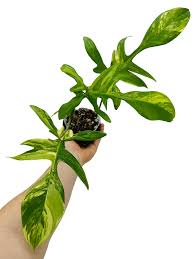The world of rare and tropical plants is a mesmerizing realm where nature showcases its most vibrant and exotic creations. These botanical wonders, often tucked away in remote corners of the globe, offer a glimpse into the diversity and ingenuity of plant life. From the lush rainforests of the Amazon to the arid deserts of Madagascar, rare and tropical plants captivate both botanists and nature enthusiasts alike with their unique adaptations, striking appearances, and ecological significance.
Biodiversity Hotspots:
Tropical regions, characterized by their warm climates and high levels of rainfall, are home to an extraordinary array of plant species. Biodiversity hotspots, such as the Amazon Rainforest, the Congo Basin, and the Southeast Asian archipelago, harbor an immense wealth of rare and tropical plants. These areas, covering only a small fraction of the Earth's surface, house a majority of the planet's flora and fauna, making them crucial for the overall health of the global ecosystem.
One of the most iconic tropical plants is the Rafflesia arnoldii, often referred to as the "corpse flower." Native to the rainforests of Sumatra, this enormous flower holds the title of the world's largest individual flower, with blooms reaching up to three feet in diameter. The Rafflesia's foul odor, resembling that of a decomposing corpse, serves the practical purpose of attracting carrion flies, which act as pollinators.
Adaptations to Unique Environments:
Tropical plants have evolved a myriad of adaptations to thrive in their specific environments. The epiphytic bromeliads, for example, showcase an ingenious strategy for survival in rainforests where competition for sunlight and nutrients is fierce. These plants attach themselves to tree branches, using them as a support structure while obtaining nutrients from rainwater and debris that collect in their central rosettes.
In arid regions, succulent plants such as the Agave and Aloe have developed specialized water storage tissues to endure prolonged periods of drought. These adaptations not only help the plants survive but also provide valuable resources for other organisms in their ecosystems, showcasing the interconnectedness of life in these unique habitats.
The Unusual and the Unheard-Of:
Beyond the well-known tropical plants lie a plethora of lesser-known species that contribute to the rich tapestry of biodiversity. Take the pitcher plant, for instance, found in various tropical regions. This carnivorous plant lures insects into its tubular-shaped leaves filled with digestive fluids, showcasing an extraordinary adaptation to nutrient-poor soils.
In the cloud forests of Central and South America, the Dracula orchid stands out for its eerie appearance and unique pollination strategy. Mimicking the appearance of a mushroom, the Dracula orchid attracts fungus gnats, which serve as unwitting pollinators. Such intricate relationships between rare plants and their pollinators highlight the delicate balance of nature.
Conservation Challenges:
Despite their ecological importance, many rare and tropical plants face significant threats due to habitat destruction, climate change, and illegal trade. Deforestation in the Amazon, for instance, poses a grave risk to countless plant species, some of which may hold undiscovered medicinal or economic value.
Conservation efforts are underway to protect these invaluable ecosystems and their inhabitants. Botanical gardens and seed banks play a crucial role in preserving genetic diversity by maintaining living collections and storing seeds for future generations. Additionally, community-based initiatives and sustainable harvesting practices aim to balance human needs with the preservation of these delicate environments.
Ethnobotanical Significance:
The relationship between rare and tropical plants and human cultures is deep-rooted and multifaceted. Indigenous communities often rely on local plant species for food, medicine, and cultural practices. The rubber tree (Hevea brasiliensis), native to the Amazon rainforest, has played a pivotal role in the livelihoods of local communities for centuries, providing latex for rubber production.
Many tropical plants also have a rich history in traditional medicine. The quinine-producing cinchona tree, for instance, has been used by indigenous people in South America for treating malaria. The potential for discovering new medicinal compounds in rare plants continues to drive scientific exploration and underscores the importance of preserving these botanical treasures.
Conclusion:
The world of rare and tropical plants is a treasure trove of biodiversity, offering a glimpse into the marvels of evolutionary adaptation and ecological interdependence. From the towering trees of the rainforests to the resilient succulents of arid deserts, these plants contribute to the delicate balance of ecosystems and hold untold secrets that may benefit humanity.
As we navigate the challenges of environmental degradation and climate change, the conservation of rare and tropical plants becomes paramount. By understanding, appreciating, and protecting these botanical wonders, we can ensure the preservation of Earth's natural heritage for future generations, allowing the enchanting world of rare and tropical plants to thrive in all its diversity and splendor. Visit official website beleaftropicals.com


No comments yet